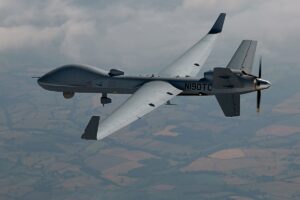
While Hughes is equipping United Kingdom MQ-9B SkyGuardian drones with the company's HM400 software-defined modem, the U.S. Air Force said it has no plans to undertake the upgrade for the service's MQ-9A Reapers. General Atomics builds the MQ-9B and MQ-9A, which has been the military's drone of choice in the last 15 years for reconnaissance and strikes in areas without significant air, jamming or hacking threats. The Air Force plans to undertake Diminishing Manufacturing Sources' improvements to the MQ-9A modem's…














